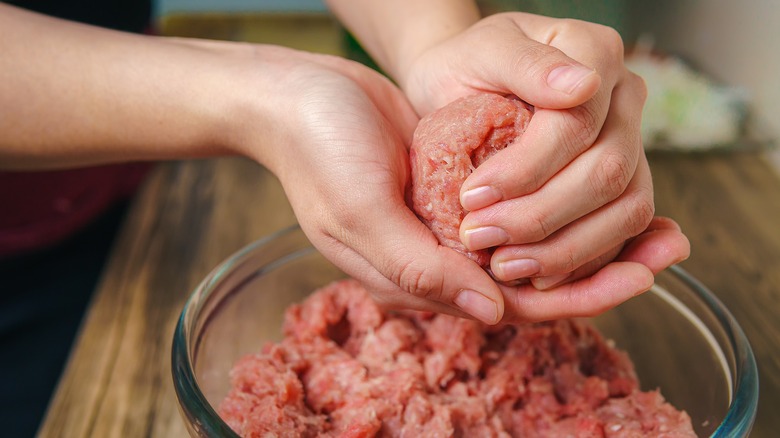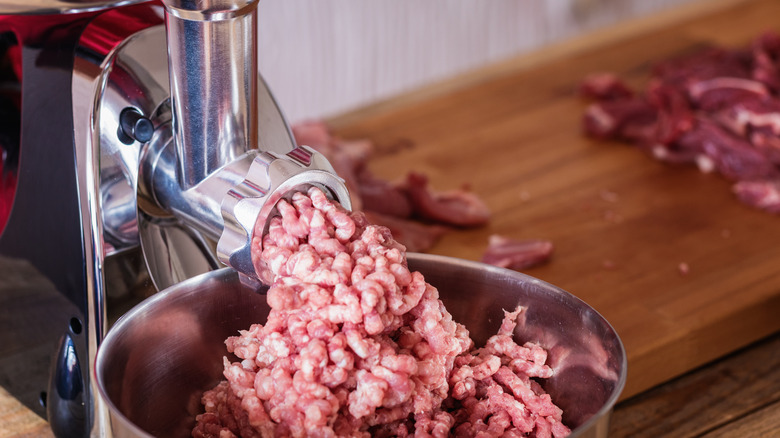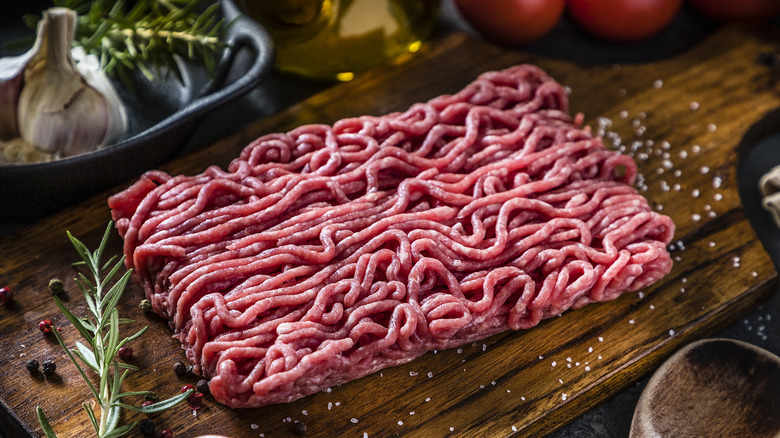Guide to Ground Beef – Ground Beef can also be referred to as hamburger or mince (which may be confusing as hamburger is usually used to mean the patty, not the meat). The ground beef you purchase at the butcher or store shop typically includes hip, shoulder, and other trim chopped in smaller chunks.
Table of Contents
The Ultimate Guide to Ground Beef (GB):
“Trim” refers to a phrase employed by butchers to refer to the outside or edge cuts of meat left over after the larger cuts have been cut away such as steaks, roasts, etc. Butchers do not typically employ a hip or a whole chuck when grounding beef.
In the first chuck, they will cut cross-rib roasts and short ribs roasted with blades first, before cutting the remainder of the meat to GB. To give the roast its ultimate appearance the fat and extra meat are cut off and then used to make GB.
The same process is used with the hip. Butchers make roasts from the hip like inside round outside round, sirloin the tip, and the eye. Any leftover end pieces (or the trim) will be used to make GB.
Butchers also will be trimmed when they make top-quality steaks such as ribeye, tenderloin, striploin, and sirloin. Do you think there’s meat in the ground? Yes, it does, however, it’s a small amount.

What is Extra Lean Ground Beef?
Here’s a fascinating idea! Did you know that neck meat is the ideal ratio of fat to meat ratios for ground beef that is extra lean?
Specialty Ground Beef:
Although most of us are accustomed to buying ground beef that has been chopped and ready to cook. However, some butchers will also provide special grinds on requests. They can have particular fats or be blended with organs, meats, or other types of meats. Such requests are typically for specific recipes or a specific diet.
It can be difficult to grind small portions of meat, so your butcher might request to take a certain amount of special grind.
A few more popular specialty grinds are Ground Sirloin, Ground Chuck, and Ground Brisket:
Ground Chuck:
Ground Chuck is a type of ground beef that can be different in fat material amounts, based on the cut of shoulder that the butcher makes. If the butcher is together a short ribs and blades it is more akin to medium-sized ground beef. The shoulder clod/cross-rib is the most slim ground beef.
The perfect method of obtaining the meat you’re looking for is to speak with your butcher regarding the amount of fat you would like to have.
Ground Brisket:
A few customers like ground brisket, usually because they want an even more fatty grind. Brisket creates a grinding which is classified as normal.
Your butcher will always be happy to design custom grinds for you. If you’re looking to make your own grinds yourself. Here are some suggestions for help along the way.

Tips for Grinding Meat at Home:
- Sharp tools are essential! Make sure your blade and grinding plate are extremely sharp.
- Your equipment must be cool. Place the grinding plate as well as the bowl in the fridge before with.
- The meat should be chilled. Place your meats in a refrigerator until it is time to begin making cuts and grinds. Some people prefer to store their meat in the freezer ahead of time (just until the ice crystals begin to form).
- Should you touch the meat too often, it can become hard. Be sure to handle it only as you need.
- Do not over-grind the meat as it could make it tough and mushy. For regular and medium-sized ground beef, you should grind the meat at least twice (anymore, and it becomes soft!). For lean and extra-lean ground beef, you can crush the meat three times (this is mostly used to blend in the fat to give it more of a “lean” look).
- Cleaning your tools. Take apart the equipment, wash it, and thoroughly sanitize it to ensure it’s secure and ready for the next time!

